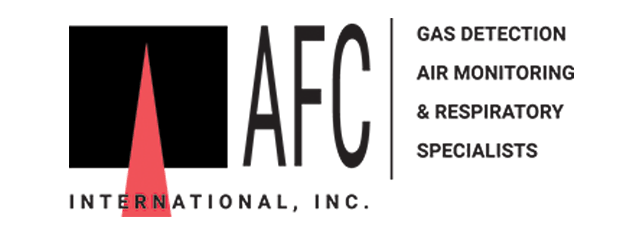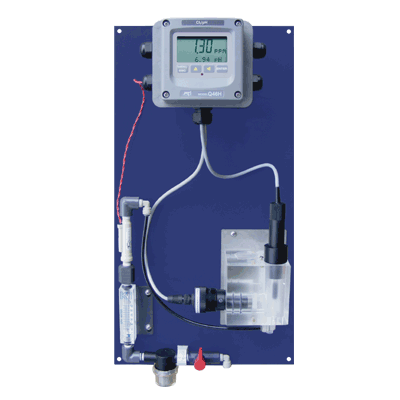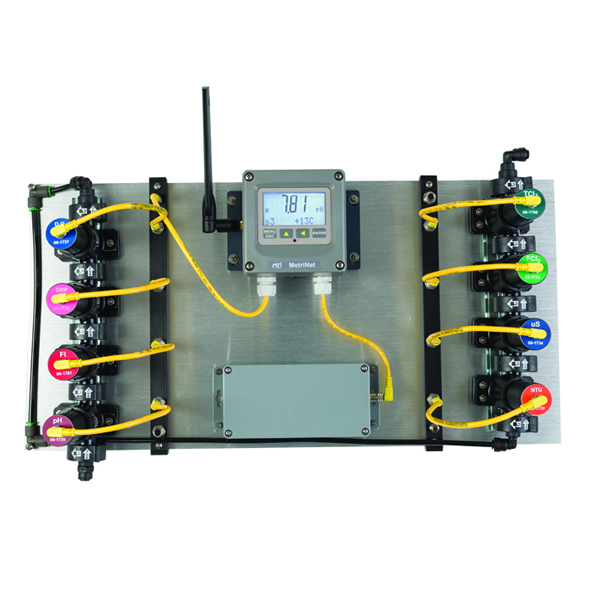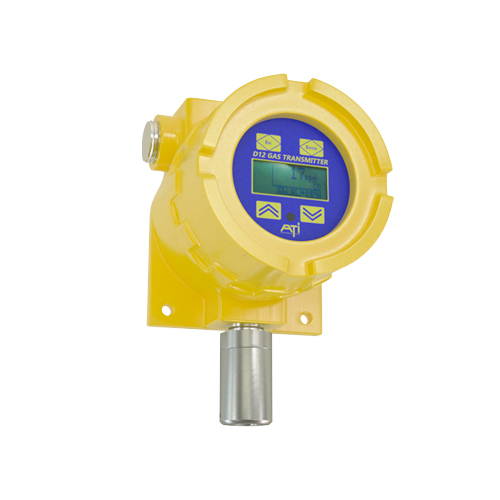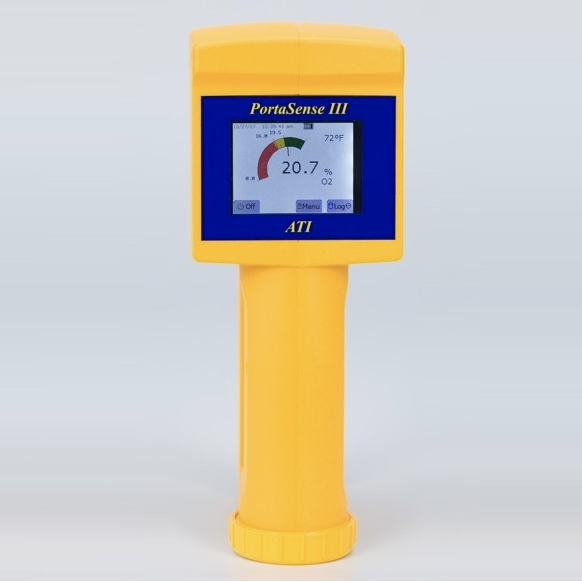Description
Description
Series D12 Digital Gas Detection Transmitter from Analytical Technology features loop powered transmission, loop powered with HART, transmitter with integral relay or a transmitter with MOBUS. Gas detection systems come in all shapes and sizes. Some require simple 4-20 mA transmission, some are better suited to local alarm relay functions, some relay require both. And increasingly, digital communication directly to the transmitter is desirable. Not to mention the fact that self-testing sensor capability adds to the reliability of any system.
Sensor Flexibility
No matter which style of transmitter you choose, your D12 Digital Gas Detection Transmitter includes features that enhance performance and provide operational flexibility, starting with out own advanced electrochemical sensors.
- Every toxic gas transmitter will accept up to 46 different sensors, greatly reducing the need for multiple transmitter models. The self aligning sensor holder simply plugs in, with automatic sensor recognition and verification when contact is made.
- Plug-in sensors store calibration data, allowing sensors to be calibrated separately from the transmitter. This allows bench calibration (or factory calibration) of sensors to reduce the necessity for carrying calibration gas around the plant. Sensors are even interchangeable with ATI’s C16 PortaSens II portable gas detector.
- Each time a sensor is zeroed or calibrated, the data is stored in sensor memory. Calibration history can be recalled and sensor condition reviewed by operating personnel whenever necessary.
Sensor Response Verification
For many toxic and combustible gases, ATI offers a unique sensor response testing system unmatched by any competitive transmitter. Even outdoors in high wind conditions, the Auto-Test system provides reliable response checks to insure system integrity.
- Sensor response is verified with an actual gas sample, generated on demand. Electronic sensor and circuit tests just cannot provide the same level of confidence.
- Auto-Test gas generators are easily installed and removed when necessary. Generators store run time information accessible to operators and are automatically tested for compatibility with the installed sensor.
- Systems using the Auto-Test generators store a testing log indicating the number of tests performed as well as test results. This data is stored in individual sensor memory for later review.
A combustible sensor is also available for the D12 system. An Auto-Test is available.
Specifications
| Range |
Supplied with standard range for each gas unless otherwise specified |
| Response Time |
Sensor dependent |
| Accuracy |
Generally ±10% of value, but limited by available calibration gas accuracy |
| Electronic Repeatability |
±1% of full scale |
| Electronic Linearity |
±0.5% of full scale |
| Zero Drift |
Less than 2% of full scale per month, non-cumulative |
| Span Drift |
Application dependent, but generally less than 3% per month |
| Alarms |
Three concentration alarms (Caution, Warning, Alarm) programmable for setpoint, hysteresis, alarm delay and manual or automatic reset. One fault alarm with programmable output and relay response. |
| Analog Output |
Loop powered 4-20 mA, 675 ohms maximum at 24 VDC (except combustible gas) |
| Serial Interface |
HART (1200 baud modem interface), MODBUS (1200-9600 – RS-232 or RD-485, software selectable) |
| Power |
12-30 VDC, 25 mA maximum in loop powered mode, 12-30 VDC, 200 mA maximum in 3-wire mode |
| Alarm Relays |
Three SPDT, 5A@230 VAC resistive |
| Relay Coil |
Programmable either normally energized or normally deenergized |
| Enclosure |
Explosion proof Class 1, Div 1, Groups B, C, D |
| Sensor Auto-Test |
Optional gas generator dependent on sensor |
| Controls |
4 magnetic switches on front of transmitter |
| Temperature |
-30° to + 60°C for toxics, -10°C minimum for oxygen sensor |
Sensor Specifications
| Gas |
Range |
Catalog No.
|
| Acetic Acid |
0-100/500 ppm |
00-1045 |
| Acid Gases |
0-10/200 ppm |
00-1038* |
| Acetylene |
0-200/2,000 ppm |
00-1057 |
| Alcohol |
0-50/500 ppm |
00-1043 |
| 0-500/2,000 ppm |
00-1044 |
| Ammonia |
0-50/500 ppm |
00-1010* |
| 0-500/2,000 ppm |
00-1011 |
| Arsine |
0-500/2,000 ppb |
00-1024 |
| 0-10/200 ppm |
00-1025 |
| Bromine |
0-1/5 ppm |
00-1000* |
| 0-5/200 ppm |
00-1001* |
| Carbon Monoxide |
0-50/1,000 ppm |
00-1012* |
| Chlorine |
0-1/5 ppm |
00-1002* |
| 0-5/200 ppm |
00-1003* |
| Chlorine Dioxide |
0-1/5 ppm |
00-1004* |
|
0-1/5 ppm, low Cl2 Response
|
00-1425*
|
| 0-5/200 ppm |
00-1005* |
|
0-200/1,000 ppm
|
00-1359
|
| Diborane |
0-500/2,000 ppb |
00-1026 |
| 0-10/200 ppm |
00-1027 |
| Dimethylacetamide |
0-100/200 ppm
|
00-1450*
|
| Ethylene Oxide |
0-20/200 ppm |
00-1039* |
| Fluorine |
0-1/5 ppm |
00-1006* |
| 0-5/200 ppm |
00-1007* |
| Formaldehyde |
0-20/200 ppm |
00-1040* |
|
0-500/2,000 ppm
|
00-1349
|
| Germane |
0-500/2,000 ppb |
00-1028 |
| 0-10/200 ppm |
00-1029 |
| Hydrogen |
0-1/10% |
00-1013 |
| 0-500/2,000 ppm |
00-1041 |
| Hydrogen Bromide |
0-10/200 ppm |
00-1455 |
| HC Sensor |
Specify Gas |
00-1516 |
| Hydrogen Chloride |
0-10/200 ppm |
00-1017* |
| Hydrogen Cyanide |
0-10/200 ppm |
00-1018* |
| Hydrogen Fluoride |
0-10/200 ppm |
00-1019* |
| Hydrogen Peroxide* |
0-10/100 ppm |
00-1042* |
|
0-200/2,000 ppm
|
00-1169
|
| Hydrogen Selenide |
0-500/2,000 ppb |
00-1030 |
| 0-10/200 ppm |
00-1031 |
| Hydrogen Sulfide |
0-10/200 ppm |
00-1020* |
| 0-200/1,000 ppm |
00-1469 |
| Iodine |
0-1/5 ppm |
00-1036* |
| 0-5/100 ppm |
00-1037* |
| Nitrogen Dioxide |
0-10/200 ppm |
00-1022* |
| Nitric Oxide |
0-50/500 ppm |
00-1021 |
| Oxygen |
0-5/25% |
00-1014 |
| Ozone |
0-1/5 ppm |
00-1008* |
| 0-5/200 ppm |
00-1009* |
|
0-200/1,000 ppm
|
00-1358
|
| 0-500/2,000 ppb |
00-1163* |
| Peracetic Acid |
0-1/5 ppm |
00-1704 |
| 0-10/100 ppm |
00-1705 |
| Phosgene |
0-1/5 ppm |
00-1015 |
| 0-5/100 ppm |
00-1016 |
| Phosphine |
0-500/2,000 ppb |
00-1032 |
| 0-10/200 ppm |
00-1033 |
| 0-200/2,000 ppm |
00-1034 |
| Silane |
0-10/200 ppm |
00-1035 |
| Sulfur Dioxide |
0-10/500 ppm |
00-1023* |
(*) Indicates Auto-Test available
